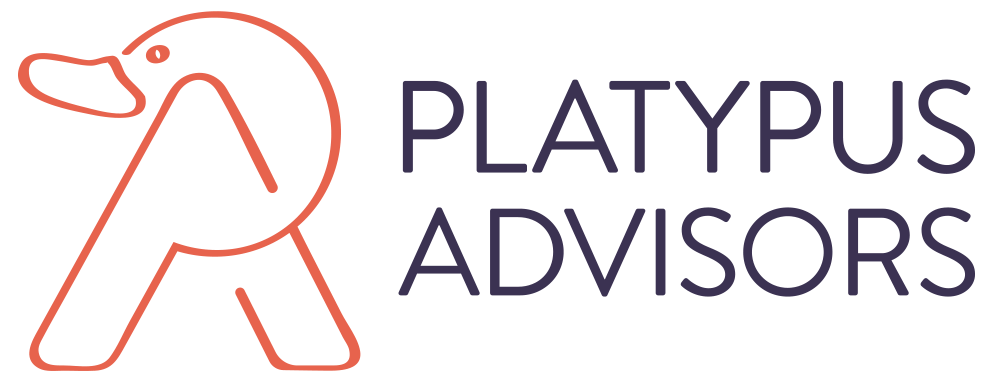Our Journey to Centering Equity
We’re dedicated to centering equity in all of our work. This is our experience on the journey so far.
By Lalitha Vaidyanathan, Lajuanda M. Asemota, & Melinh Rozen
The concept of DEI has had its ups and downs in public discourse over the years. Unfortunately, right now it’s down, receiving a great deal of pushback. But the truth is that DEI isn’t a fad, a trend, or fodder for clickbait news.
At Platypus Advisors we’ve been taking a much deeper look at equity in particular, and how to center it in our work. We’ve drafted and published our own equity commitment, which you can read in full here.
We believe that meaningful social impact cannot occur without centering equity, and it’s through this lens that we serve our clients.
That’s not to say we have equity or DEI all figured out. We are committed to centering equity in our work, and we’re on a constant journey of how best to do that. (One resource we’re a fan of is The ACT Report’s DEI Initiative. Take a gander.)
With this in mind, we’d like to share our experience at Platypus Advisors on the path to centering equity in social impact. It falls into three categories:
1. Our Internal State:
In order to design social impact initiatives to effectively address disparities, we need to first understand their root causes. Fundamental to this is developing our awareness and understanding of the systems (individual, institutional, cultural) that hold disparities in place.
We’ve found that personalizing this awareness helps us see how systems affect our own lives and the lives of others, and that heightens our empathy for the issues and people we seek to serve. What does that personalization look like? We have been fortunate to work with trainers, learn from organizations like the Center for Equity and Inclusion, and work with each other to deepen our understanding of topics such as dominant culture, intersectionality and its impacts, systemic racism, and the individual, institutional, and cultural factors that hold disparities in place.
“We believe that meaningful social impact cannot occur without centering equity, and it’s through this lens that we serve our clients.”
We’re establishing norms for how we show up for each other internally. For example: Adopting Equity Agreements as the basis of what we expect of each other, and practicing normalizing feedback so we can hold ourselves and each other accountable when we inevitably act out of Agreement.
Finally, we’ve begun the process of revisiting and revising our policies and practices to better center equity. Examples of this include revisiting compensation and benefits with an equity lens, reviewing guidelines for onboarding new consultants, and better aligning our client work with our values.
2. Centering People Most Impacted:
No one knows the solutions to the social issues we’re trying to solve better than those who are impacted by them. As such, the design of social impact initiatives needs to center the voices of people and communities most impacted by the issues we work on.
At Platypus Advisors, we have developed a tool called an Equity Lens to help us center people most impacted in our work. It helps build our capacity and serves as a reminder to center these voices in every step of our client work.
Sometimes, we find ourselves unable to apply the Equity Lens, whether due to time, resource, or other constraints. But our goal is to introduce it in every client project from the start, and our hope is that over time we can find ways to implement it even when faced with the usual constraints of time and resources.
3. Continuous Learning and Improvement:
If we knew the solutions to the deepest disparities that exist in our society, we would have solved them by now. The issues we work with our partners on are complex, multi-faceted, multi-stakeholder challenges in ever-evolving contexts. This means learning and iteration is not only desired but required to match the nature of these issues.
“The design of social impact initiatives needs to center the voices of people and communities most impacted by the issues.”
By designing from the margins, using iterative cycles of Plan > Do > Learn, we can step into complexity and begin to address seemingly intractable issues. In our work at Platypus Advisors designing social impact initiatives, for example, we often counsel clients to develop and test small programs and then grow from there, as opposed to designing and rolling out a five-year program all at once.
We have found that a dedication to iteration and a willingness to learn can open us up to ideas and impact we hadn’t dreamed of before.
—
The deeper we get into this work, the more we realize how long the road is to successfully center equity in everything we do. We are beginners on this journey, but we’re committed, inspired, and enthused to continue walking the path. Always, we are grateful for the equity work that came before us, and the shoulders of fearless equity advocates we stand on.
As we grow and learn on our equity journey, we can only hope that our social impact work increases in effectiveness and our contributions to society improve with it. We welcome you to join us on this journey!
Learn more about how we approach social impact.

